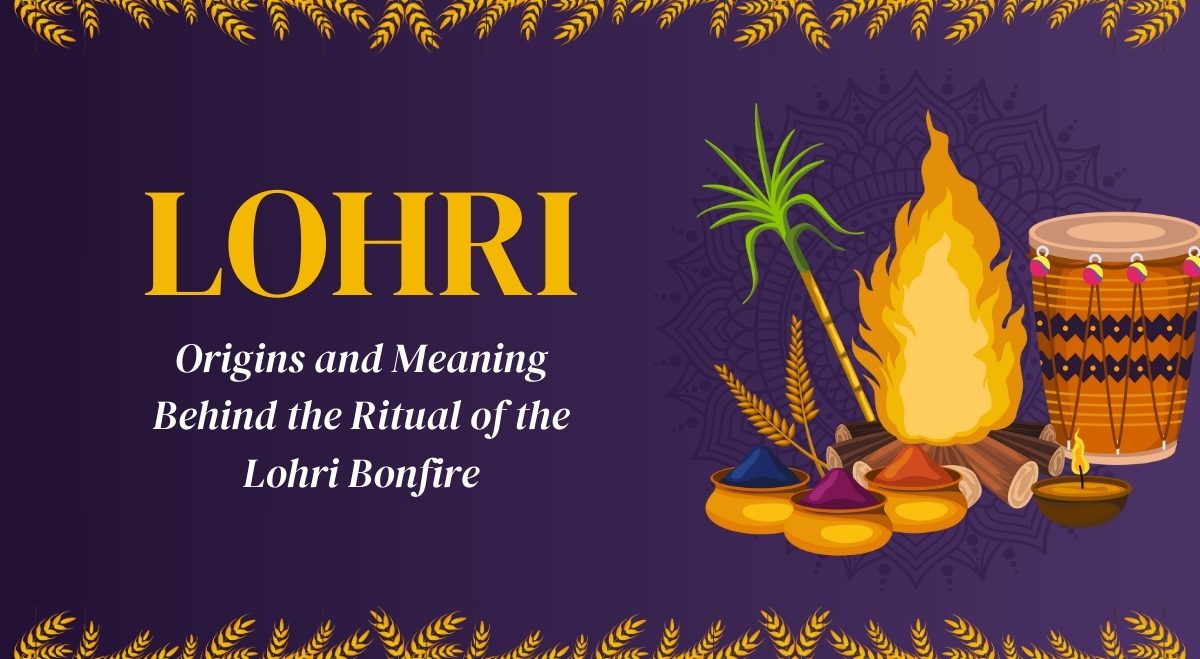The Lohri bonfire is a central element of the harvest festival in Punjab. This sacred flame carries profound meaning and embodies ancient wisdom. Let’s explore the origins and symbolism of this cherished ritual.
Origins of the Festival of Lohri Bonfire
The Lohri bonfire tradition dates back to when our ancestors lived in harmony with the land. As harsh winter peaked, they gathered to celebrate the turning of the season and the promise of warmer days.
Agricultural Beginnings
In Punjab’s heartland, the Lohri bonfire symbolized rebirth. It represented the sun’s return and the earth’s awakening. Farmers lit these fires to honor Agni, the fire god, seeking blessings for a bountiful harvest. The flames carried their prayers skyward, asking for prosperity and crop protection.
A Symbol of Hope
The Lohri bonfire pierced winter’s gloom. It served as a symbol of hope during the coldest days. It reminded our forebears of nature’s cycle. Just as the fire’s warmth cut through the chill, the sun would soon return to nurture the land.
Lohri Festival: Symbolism of the Lohri Bonfire
The Lohri bonfire is rich with meaning. Each aspect carries deep significance for the community.
Purification and Renewal
Circling the sacred fire is a purification ritual. The flames cleanse negativity, burning away the old and making way for new beginnings. This symbolism aligns with Lohri’s agricultural timing, marking the end of one cycle and the start of another.
Unity and Community
The bonfire brings people together, creating a circle of warmth and light. People gather around the flames, strengthening community bonds. The fire becomes a focal point where stories are shared and songs are sung.
Offerings to the Divine
Sesame seeds, jaggery, and popcorn are tossed into the fire as offerings to the divine. These harvest products represent gratitude. Offering them symbolizes thanksgiving and hope for continued blessings.
The Ritual of the Lohri Bonfire Festival
The Lohri bonfire ritual is steeped in tradition. Each step carries meaning passed down through generations.
Preparation
As sunset nears on Lohri, communities gather to build the bonfire. Dry wood, cow dung cakes, and sugarcane stalks are collected. Each element has significance: wood represents strength, cow dung cakes symbolize fertility, and sugarcane stalks stand for life’s sweetness.
Lighting the Fire
At dusk, the eldest lights the bonfire. This act is deeply reverent, often accompanied by prayers or sacred chants. The fire’s first spark brings joy and celebration.
Circling the Fire
Once ablaze, people begin the parikrama, circling the fire clockwise. This movement mirrors the sun’s path and symbolizes connection to cosmic rhythms.
Offerings and Prayers
As they circle, people make offerings. Sesame seeds, jaggery, popcorn, and sometimes peanuts are given to the fire. Each offering accompanies a prayer or wish. The fire’s crackle is believed to carry these prayers heavenward.
Songs and Dance
Lohri celebrations include music and dance. The area around the bonfire comes alive with folk songs and traditional dances. The famous “Sundar mundariye” song is often heard, telling of Dulla Bhatti and connecting people to their cultural heroes.
The Bonfire’s Role in Harvest Traditions
The Lohri bonfire is tied to agricultural heritage and plays a crucial role in harvest traditions.
Marking the Harvest Season
Lohri coincides with rabi crop harvesting. The bonfire celebrates this agricultural milestone. Farmers gather to share experiences and look forward to their labor’s fruits.
Honoring the Sun God
The fire represents Surya, the sun god. Lighting it honors Surya and expresses gratitude for the warmth and light nurturing crops. This connection underscores Lohri’s roots in ancient solar worship.
Fertility and Abundance
The bonfire’s heat symbolizes fertility and abundance in land and community. Its warmth is thought to prepare the earth for sowing. Newlyweds and new parents are often honored here, celebrating growth in families and crops alike.
Modern Significance of the Lohri Bonfire
While rooted in tradition, the Lohri bonfire remains relevant today.
Environmental Awareness
Recent years have seen growing environmental consciousness. Many communities now organize larger, communal bonfires, reducing pollution while maintaining tradition.
Cultural Identity
For diaspora Punjabis, the Lohri bonfire connects them to their roots. It’s a way to pass traditions to younger generations and share heritage with others.
Social Cohesion
The Lohri bonfire brings communities together, strengthening social bonds and reminding people of community’s importance in their lives.
Conclusion: The Eternal Flame of Tradition
The Lohri bonfire is a living link to the past, a celebration of the present, and a beacon for the future. It connects people to their ancestors, community, and nature’s rhythms.
The Lohri bonfire’s spirit carries messages of gratitude, community, and hope. Its light guides towards a future honoring tradition while embracing change.
May the Lohri bonfire bring warmth, prosperity, and joy to all.

